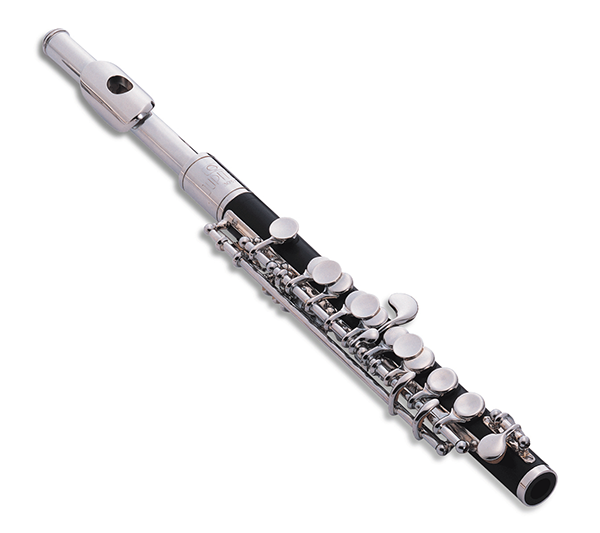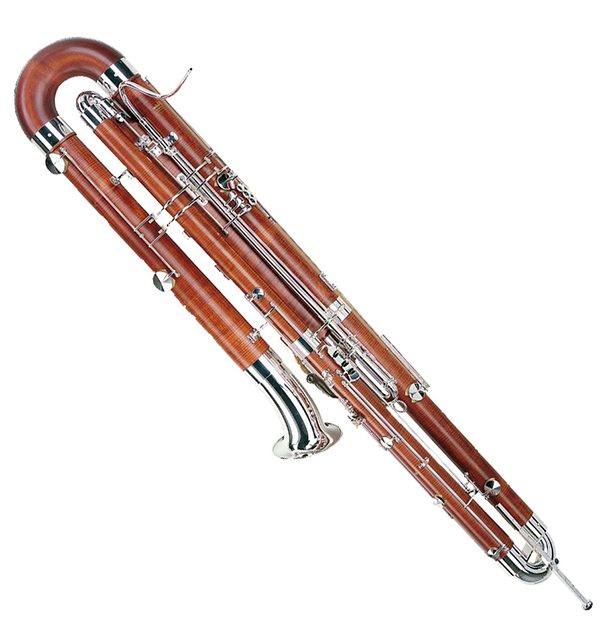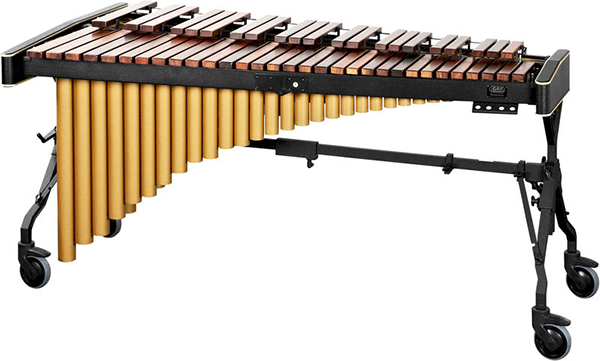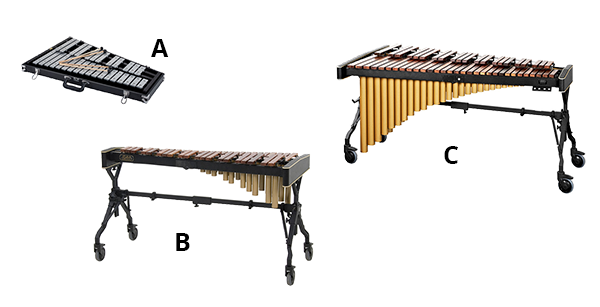Instruments part 2
In this guide...
Key terms:
Subscription required!
To view the complete study guide, you will need a valid subscription. Why not subscribe now?
Already have a subscription? Make sure you login first!
Introduction
We have already looked at the basic families of instruments, and now we'll look at a few more unusual members of the instrument families, and then look in more detail at the relative ranges of instruments and their capabilities.
Further woodwind instruments
The woodwind family of instruments that you have already met in Instruments part 1 has two additional members which we did not cover before. These are the very highest and very lowest members of the woodwind family, and also happen to provide the highest and lowest notes of the whole orchestra.
The Piccolo
 The piccolo
The piccoloThe highest-pitched instrument of all is the piccolo, which is Italian for "small" - and you can see why, as this is a very small instrument around half the size of a flute. It sounds one octave higher than a flute.
The Contrabassoon
 The contrabassoon
The contrabassoonThe lowest-pitched instrument of the woodwind family is the contrabassoon. Do not confuse this with either the bassoon or the contrabass (which is another word for the string family's double bass). The contrabassoon looks and sounds similar to a bassoon, but is physically larger and sounds one octave lower than a bassoon.
Another percussion instrument
The Marimba
 The marimba
The marimbaIt can sometimes be easy to confuse the percussion instruments that have a keyboard-style layout. You have already met the xylophone (with wooden bars) and the glockenspiel (metal bars, and smaller than a xylophone). The marimba looks a little like a xylophone (it also has wooden bars), but it has long resonating tubes beneath each wooden bar. These resonating tubes give the marimba a characteristically different sound to the xylophone, and it sounds much mellower and deeper in pitch.
 Percussion instruments with a keyboard layout:
Percussion instruments with a keyboard layout:A: glockenspiel
B: xylophone
C: marimba
You might also see resonating tubes on a xylophone, but these will be very small and only under the lowest notes. By contrast, the marimba's resonating tubes are large and obvious, and are present under every note.
High and low
Not all of the instruments in a family (see: Instruments part 1) sound at the same pitch. In fact, each family of instruments tends to span the entire range of pitches, with some low instruments, some high instruments, and some in between.
It is important to know which instruments are high and which are low, so in the tables below you can see the instruments ranked in order of pitch:
Strings
| Instrument | Approximate range |
|---|---|
| Violin | mid-range to very high |
| Viola | Mid-range |
| Violoncello | Mid-range to lower range |
| Double bass | Low |
| The harp is capable of playing the full range of notes. | |
Woodwinds
| Instrument | Approximate range |
|---|---|
| Piccolo | Very high |
| Flute | High to very high |
| Oboe | High |
| Clarinet | Mid-range to high |
| Bassoon | Mid-range to low |
| Contrabassoon | Low |
Brass
| Instrument | Approximate range |
|---|---|
| Trumpet | Mid-range to high |
| French horn | Low to upper mid-range |
| Trombone | Low to mid-range |
| Tuba | Low |
Keyboards
The keyboard instruments are typically all capable of playing the full range of notes, with the exception of the celesta, which plays in the mid to very high range.
Woodwind types
Within the woodwind family, there are several different types of instrument, which produce sound in a slightly different way.
Recall that all woodwinds produce sound with a vibrating column of air within the instrument's tubular structure. The air enters the instrument through the mouthpiece, and different kinds of mouthpiece set the air vibrating in a different way.
We can categorise the woodwinds into the following sub-types, based on mouthpiece:
- Reedless
- Single reed
- Double reed
Reeds
Reeds are small pieces of material that vibrate either against eachother (double reeds) or against the mouthpiece of the instrument (single reeds) when blown by the player.
Single reed instruments have a distinctively different sound from double reed instruments.
The following table shows each member of the woodwind family and gives the corresponding type. This table also includes other less-common members of the woodwind family which nevertheless are regularly found in the symphony orchestra.
| Type | Instruments |
|---|---|
| Reedless |
Piccolo Flute Recorder |
| Single reed |
Clarinet Saxophone Bass clarinet |
| Double reed |
Oboe Cor anglais Bassoon Contrabassoon |
Read more...
With a subscription to Clements Theory you'll be able to read this and dozens of other study guides, along with thousands of practice questions and more! Why not subscribe now?
Revision
Are you sure you've understood everything in this study guide? Why not try the following practice questions, just to be sure!